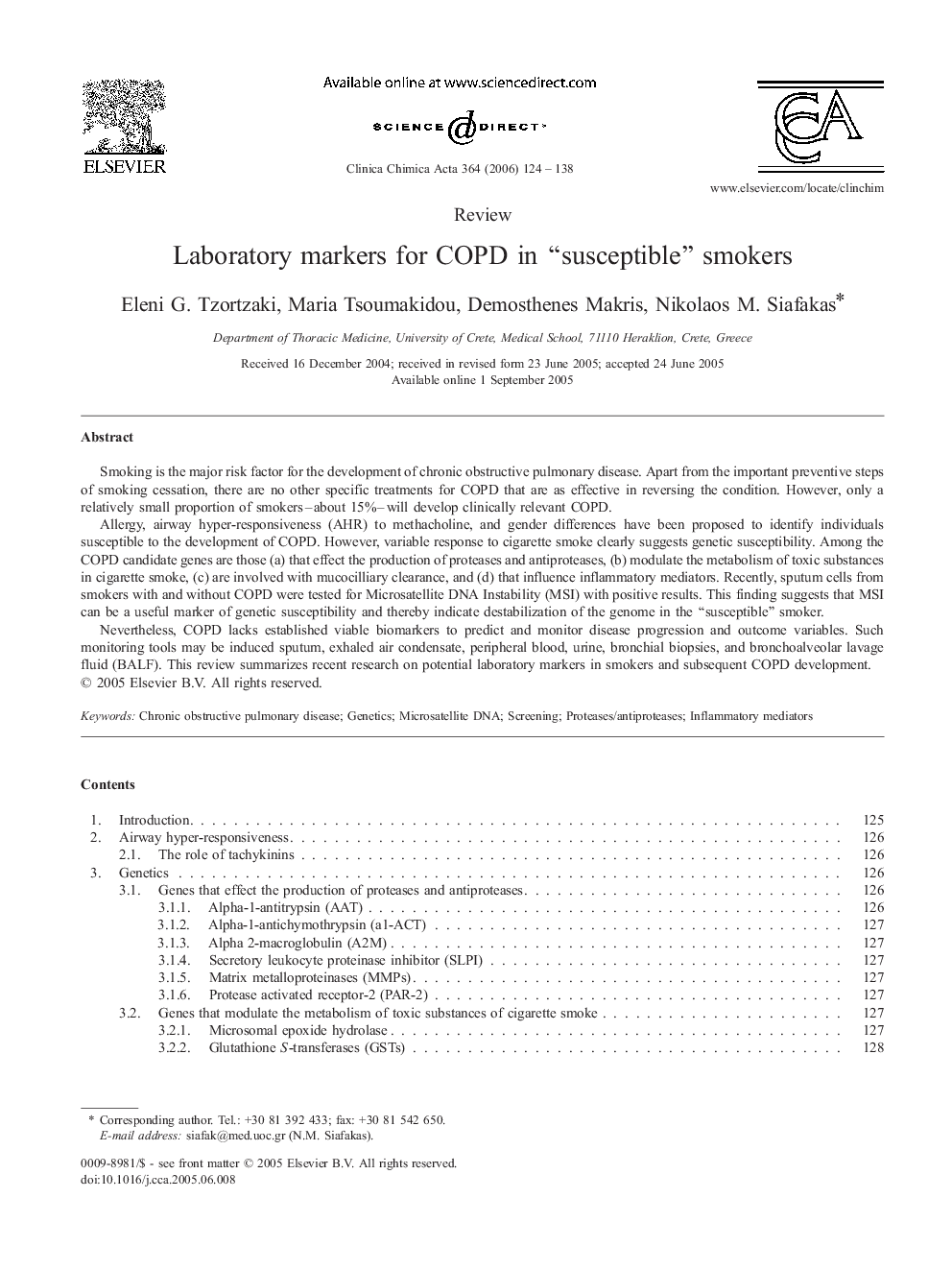| Article ID | Journal | Published Year | Pages | File Type |
|---|---|---|---|---|
| 1968327 | Clinica Chimica Acta | 2006 | 15 Pages |
Smoking is the major risk factor for the development of chronic obstructive pulmonary disease. Apart from the important preventive steps of smoking cessation, there are no other specific treatments for COPD that are as effective in reversing the condition. However, only a relatively small proportion of smokers–about 15%–will develop clinically relevant COPD.Allergy, airway hyper-responsiveness (AHR) to methacholine, and gender differences have been proposed to identify individuals susceptible to the development of COPD. However, variable response to cigarette smoke clearly suggests genetic susceptibility. Among the COPD candidate genes are those (a) that effect the production of proteases and antiproteases, (b) modulate the metabolism of toxic substances in cigarette smoke, (c) are involved with mucocilliary clearance, and (d) that influence inflammatory mediators. Recently, sputum cells from smokers with and without COPD were tested for Microsatellite DNA Instability (MSI) with positive results. This finding suggests that MSI can be a useful marker of genetic susceptibility and thereby indicate destabilization of the genome in the “susceptible” smoker.Nevertheless, COPD lacks established viable biomarkers to predict and monitor disease progression and outcome variables. Such monitoring tools may be induced sputum, exhaled air condensate, peripheral blood, urine, bronchial biopsies, and bronchoalveolar lavage fluid (BALF). This review summarizes recent research on potential laboratory markers in smokers and subsequent COPD development.
